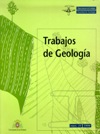Abstract
In the Eastern Cordillera and Subandean Ranges in northern Argentina, two large groups of rocks can be distinguished: an upper Proterozoic and Paleozoic basement, deformed during Panamerican and Famatinian orogenic cycles, and the Andean cover, lying unconformably over the old basement. Two main andean tectonostratigraphic units can be also defined: a preorogenic sequence (major part of Salta group), linked to an extensional tectonic event, and the upper part of Salta group and the Orán group that correspond to the sedimentary filling of a foreland basin adjacent to a fold-thrust belt. The structures related to the extensional tectonic process are normal faults arranged in a N-S trending bands. The most important compressional structures are reverse faults and thrusts, and scarce related folds. Most of the reverse faults result from inversion of the extensional faults during the compressional tectonics process. The analysis of different kinematic markers shows an East tectonic transport direction for the Andean compressional structures. Structural and kinematics analysis allow us to distinguish several stages during the compressional event. Thrust faulting started at 17 to 14 Ma in westermost tectonic units of the Eastern Cordillera and at 11 Ma in eastern thrust sheets. The compressive deformation was transferred to the Subandean Ranges at 8.5 Ma and lasted, at least locally until 1 Ma, and it probably caused the second generation of thrusts (out of sequence thrusts) in the Eastern Cordillera. Latest extensional and strike-slip faults started at 1-2 ma. and are still active.Downloads
Download data is not yet available.

